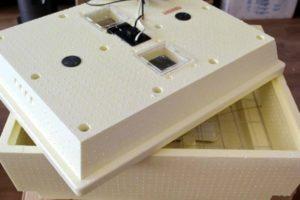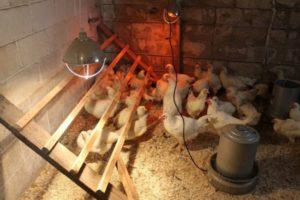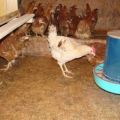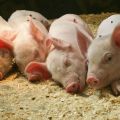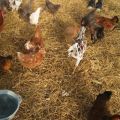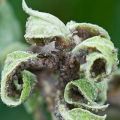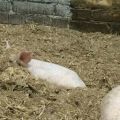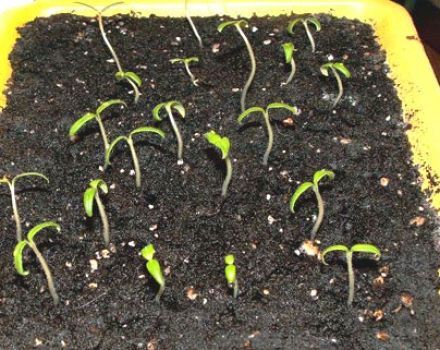Organizing and caring for bacteria for litter in a chicken coop with your own hands
When organizing a chicken coop, breeders must cover the floor with certain material. This need is explained by the fact that poultry without a substrate, due to accumulated waste, are more likely to get sick. Today's market offers a selection of specialized bedding bacteria in the chicken coop that recycle organic compounds, thereby preventing rotting and eliminating unpleasant odors.
What is bacterial litter for?
Bio (or fermentation) bedding is a relatively new product on the market, which is a set of granules, solutions or powders that contain aerobic bacteria. Similar additives are used in the substrate for the processing of poultry manure.
Standard bedding made of sawdust or other materials should be changed every 3-5 days. The use of aerobic bacteria allows this procedure to be carried out every 2-3 years.
The need for regular replacement of substrates is due to the fact that droppings, falling into straw or sawdust, begin to rot. This process contributes to the spread of pathogenic microorganisms throughout the chicken coop and significantly increases the risk of developing diseases in poultry.
Aerobic bacteria prevent decay and fermentation. These microorganisms generate heat during their vital activity. By spreading the fermentation bed up to half a meter high, you can provide the chicken coop with sufficient warmth during the cold season. Aerobic bacteria are able to heat sawdust and straw to a temperature of +30 degrees.
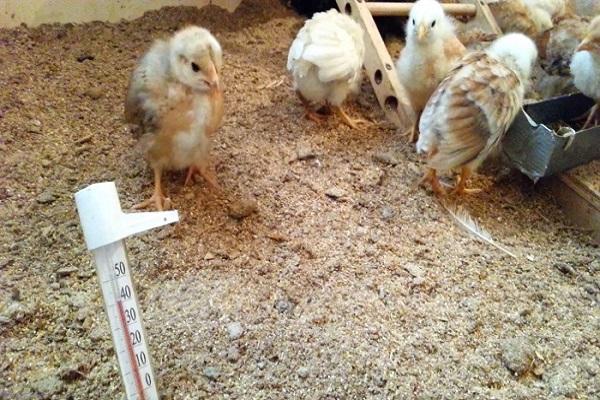
Advantages and disadvantages
Using biobacteria in chicken coop litter has the following advantages over traditional substrates:
- Rotting of the material is excluded. This reduces the risk of contamination of poultry. Also, excluding rotting, bacteria thereby keep the chicken coop clean.
- A comfortable temperature for living is maintained in the chicken coop. The substrate, due to the activity of aerobic bacteria, warms up to +30 degrees.
- The smell inside the hen house improves.
- After processing the manure, organic compost is obtained, which can be used to fertilize plants.
- The fermentation bed should be changed no more than once every 2-3 years.
Bio-litters are ineffective at temperatures below 0 degrees: beneficial bacteria die due to frost. Despite the fact that such substrates are significantly more expensive than standard ones, such a solution is ultimately more profitable than traditional ways of organizing a chicken coop. To meet the needs, no more than 10-50 grams of fermentation bacteria will be required for each square meter of the room.However, a lot of straw or sawdust is needed to form a bio-substrate.
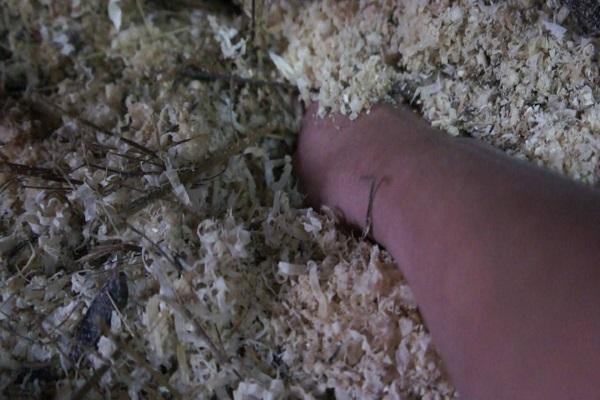
When using a fermentation mat, it is necessary to ensure the removal of moisture: if there is insufficient ventilation, condensation appears on the material. In addition, chickens often consume straw or sawdust. And due to the ingress of enzymes into the stomach in birds, dysfunction of the digestive tract develops.
Varieties of bedding
To organize deep (at least 40 centimeters) bedding in the chicken coop with your own hands, it is recommended to pay attention to the products of the following brands:
- BioGerm. German complex bacterial bedding that destroys pathogenic bacteria, fungi and mold. The product does not contain toxic substances, hormones or antibiotics. For every square meter of the chicken coop, 50 grams of this powder will be required. The bio-litter with BioGerm is replaced every two years.
- Net-Plast. Chinese product recommended for use with sawdust. Net-Plast prevents rotting and eliminates unpleasant odors. The main disadvantage of such a bio-litter is that the bacteria are activated 6-7 days after the introduction of enzymes.
- BioSide. Russian product containing 11 varieties of aerobic bacteria. An important feature of BioSide is that a constant supply of droppings or urea must be ensured after application of the bio-litter. Otherwise, the bacteria will die.
- Baikal EM 1. The product is produced in the form of a liquid containing biobacteria. This form is convenient in that immediately after processing the sawdust Baikal EM 1 begins to work. Do not use chlorinated water with this product.
- Bioferm. Ukrainian bio-litter, which must be dug up every 5-6 days. This product requires replacement after 3 years. Bioferm heats the chicken coop to +20 degrees.
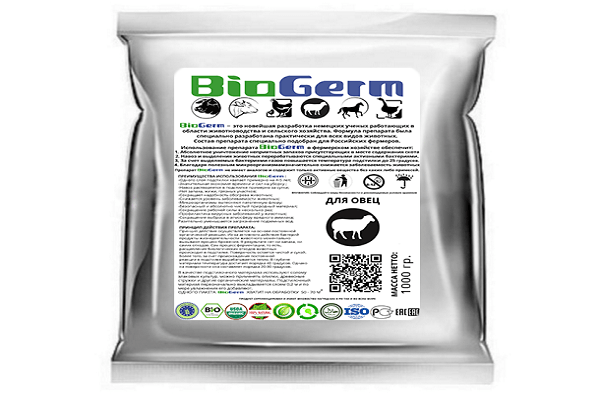
The effectiveness of most of the above bio-litters is the same. The main difference between the products is the release form and the rate of enzyme activation.
How to choose?
When choosing a bedding suitable for chickens, the following recommendations should be considered:
- purchase certified products;
- pay attention to the brand and manufacturer's reviews;
- after purchase, treat a small area with enzymes and evaluate the effectiveness of the product;
- pay attention to the shelf life and duration of the bio-litter;
- take into account the requirements for the use of the drug.
Also, when choosing chicken bedding, you should consider the type of bacteria contained in the product. Some microorganisms need to provide specific conditions for life (constant supply of urea and others).

Conditions for use
The effectiveness of the fermentation bed depends on the conditions of use. In order for the biomaterial to perform its own functions, it is necessary to provide:
- working ventilation, which will prevent condensation from settling on sawdust or straw;
- constant supply of oxygen, which requires regular (every 5-6 days) stirring up the litter;
- humidity at 25%.
If a deep substrate is laid in the chicken coop, then the bird population should not exceed five individuals per square meter.
After the expiration date (indicated on the package), the litter can be used to fertilize plants without additional processing.
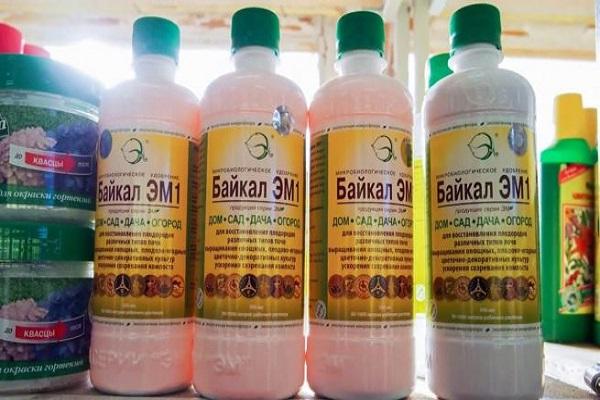
How to use it correctly?
New bio-litter is laid according to the following algorithm:
- All birds are removed from the hen house, after which the room is ventilated, cleaned and disinfected. The best time to change the litter is mid-autumn.
- The plaster on the walls is renewed, the feeders and drinkers are cleaned.
- Before laying the litter, the floor is dried and, if necessary, heated.Biobacteria die if the ambient temperature drops to 0 degrees.
- Sawdust, peat, moss or other material is spread along the floor. The thickness of the substrate varies between 27-40 centimeters.
- The enzyme preparation is distributed over the surface of the substrate. If a powder is used, then the latter after application is filled with water in the required volume.
In some cases, it is necessary to lay out the bedding and enzymes in layers. The drug should not come into contact with a wooden floor.

Features of litter care
Microorganisms that contain bio-litter require a regular supply of nutrients. Therefore, for the substrate to "work", you need to periodically add droppings (urea) and a mixture of 20 grams of enzymes and one kilogram of sugar.
After laying bio-litter, it is forbidden to use insecticides and other means used in the fight against parasites and rodents. The humidity level in a room with such a substrate should not exceed 60%. Otherwise, it is important to ensure effective ventilation.
To organize the litter with bacteria, it is recommended to take coarse wood waste. Small raw materials stick together over time, forming dense lumps.
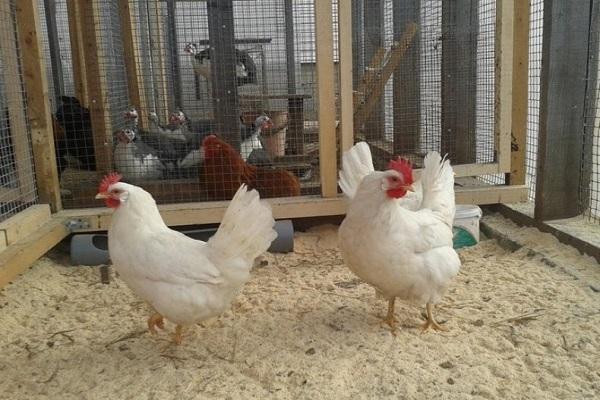
In winter, it is recommended to install a thermometer in the hen house. If the ambient temperature begins to decrease, then the litter must be mixed with cattle manure, which contains trace elements that activate biobacteria. In case of a sharp change in living conditions of chickens, the poultry house should be heated.
Contraindications
Bio-litters have no contraindications for use. This product is based on natural ingredients that do not contain hormones or antibiotics. Therefore fermentation substrates are not hazardous to birds and humans.
